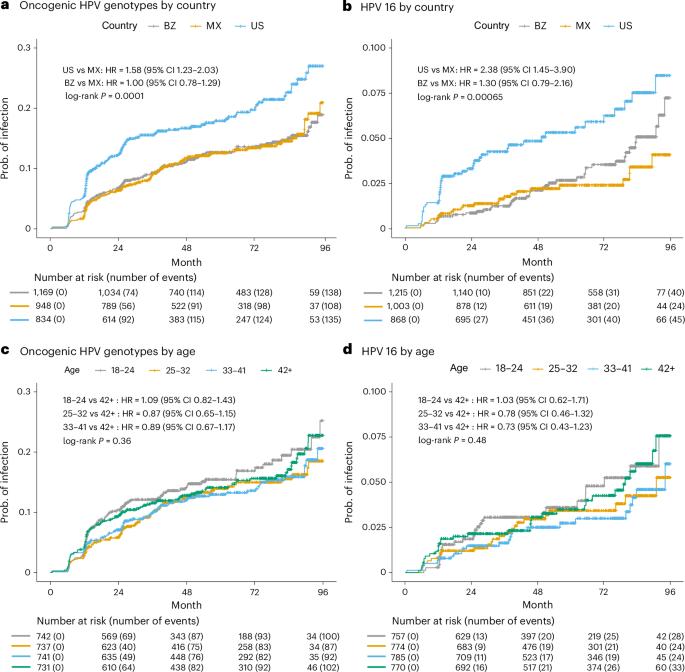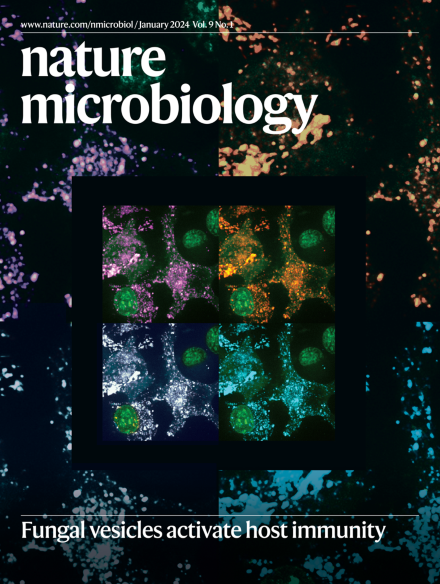对 3 137 名男性口腔人类乳头瘤病毒发病率的多国流行病学分析
IF 20.5
1区 生物学
Q1 MICROBIOLOGY
引用次数: 0
摘要
口腔人乳头瘤病毒(HPV)与口咽癌(OPC)有关。虽然口咽癌的发病率在全球范围内呈上升趋势,但人们对口腔 HPV 感染率的了解却很有限。在此,我们对 2005 年至 2009 年期间从美国、墨西哥和巴西招募的 3,137 名男性进行了口腔 HPV 发病率的流行病学观察分析。我们对新感染 HPV 的患者进行了中位数为 57 个月的随访。同时还评估了累积发病率以及与感染相关的因素。口腔致癌型 HPV 的发病率为每千人月 2.4 例,不随年龄变化,且在整个研究期间保持不变。口腔 HPV 感染风险与饮酒、男性性伴侣、终生女性性伴侣较多、口交次数较多和受教育程度较高密切相关。这些数据表明,男性一生中都有感染口腔人乳头瘤病毒的风险,这表明补种疫苗可能会降低新的感染率。本文章由计算机程序翻译,如有差异,请以英文原文为准。


Multinational epidemiological analysis of oral human papillomavirus incidence in 3,137 men
Oral human papillomavirus (HPV) is associated with oropharyngeal cancer (OPC). Although OPC incidence is increasing globally, knowledge of oral HPV infection rates is limited. Here we carried out an observational epidemiological analysis of oral HPV incidence in 3,137 men enrolled from the United States, Mexico and Brazil between 2005 and 2009. Individuals were followed for new HPV infection for a median of 57 months. Cumulative incidence and factors associated with acquisition were also assessed. The incidence rate of oral oncogenic HPV was 2.4 per 1,000 person-months, did not vary with age and was constant throughout the study period. Risk of oral HPV acquisition was significantly associated with alcohol consumption, having male sexual partners, more lifetime female sexual partners, more oral sex given and higher educational attainment. These data indicate that men are at risk of acquiring oral HPV throughout their lifetime, suggesting that catch-up vaccination may reduce new infection incidence. Multinational analysis of oral human papillomavirus infection incidence and associated factors in 3,137 men reveals infection risk is maintained throughout lifetime, with implications for vaccination strategies.
求助全文
通过发布文献求助,成功后即可免费获取论文全文。
去求助
来源期刊

Nature Microbiology
Immunology and Microbiology-Microbiology
CiteScore
44.40
自引率
1.10%
发文量
226
期刊介绍:
Nature Microbiology aims to cover a comprehensive range of topics related to microorganisms. This includes:
Evolution: The journal is interested in exploring the evolutionary aspects of microorganisms. This may include research on their genetic diversity, adaptation, and speciation over time.
Physiology and cell biology: Nature Microbiology seeks to understand the functions and characteristics of microorganisms at the cellular and physiological levels. This may involve studying their metabolism, growth patterns, and cellular processes.
Interactions: The journal focuses on the interactions microorganisms have with each other, as well as their interactions with hosts or the environment. This encompasses investigations into microbial communities, symbiotic relationships, and microbial responses to different environments.
Societal significance: Nature Microbiology recognizes the societal impact of microorganisms and welcomes studies that explore their practical applications. This may include research on microbial diseases, biotechnology, or environmental remediation.
In summary, Nature Microbiology is interested in research related to the evolution, physiology and cell biology of microorganisms, their interactions, and their societal relevance.
 求助内容:
求助内容: 应助结果提醒方式:
应助结果提醒方式:


